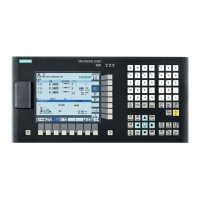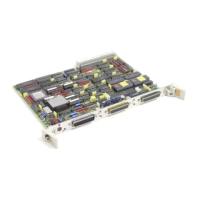Commissioning Manual
340 6FC5397-4EP10-0BA8, 07/2018
Addressing user data starts with the path section
, followed by the GUD name.
For a field, after the name, the required field index should be specified in square brackets.
<DATA name ="gud/syg_rm[0]"
<OP>"gud/syg_rm[0]" 0 10 </op>
Addressing the global user data
Addressing starts with the path section gud, followed by the specification of the area CHANNEL. This address section is
followed by the specification of the GUD areas:
Then enter the GUD name. If an array is to be addressed, the name is
followed by the array subscript in square brackets.
<data name ="gud/channel/mgud/syg_rm[0]">1</data>
<op>"gud/channel/mgud/syg_rm[0]" = 5*2 </op>
Creating typical menus in user dialogs by addressing components
This section describes how to create typical menus in user dialogs by generating the script file (xmldial.xml) and XML files
(for example, machine_settings.xml) inserted in the "xmldial. xml" file that are required for addressing the desired
components.
Generating the script file
The "xmldial.xml" control file integrates, with the "INCLUDE" XML tag, XML files containing programmed instructions for
displaying the dialog forms and parameters on the HMI.
Used identifiers and their meanings
<?xml version="1.0" encoding="gb2312"?>
DialogGui: defines all dialog configurations.
<?include src="f:\appl\Main.xml"?>
: includes the desired XML description.
<?include src="f:\appl\Setting.xml"?>
<?include src="f:\appl\Parameter.xml"?>
DialogGui: defines all dialog configurations.
Generating the XML file for creating the start menu
General information
● Type of addressed components: NC variables
● Menu function on the HMI: displaying the system data

